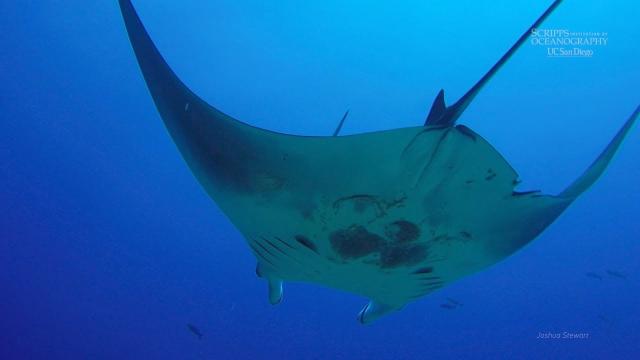Marine biologist Joshua Stewart was scuba diving in the Gulf of Mexico when he spotted a baby manta ray — an unexpected find, given that juveniles are extremely rare and seldom observed by humans.
After analysing other divers’ juvenile sightings, he and his colleagues determined a specific section of the Gulf to be a nursery for oceanic manta rays, according to their study published recently in Marine Biology.
“The juvenile life stage for oceanic mantas has been a bit of a black box for us, since we’re so rarely able to observe them,” Stewart, a graduate student at the University of California San Diego, said in a press release. The nursery could prove useful for better understanding baby manta rays, he said.
The nursery is located around 160km south of Texas in the Flower Garden Banks National Marine Sanctuary, a 90.12km² protected area in the Gulf of Mexico. It harbours giant manta rays in addition to corals, jellies, whales, sea turtles and other animal species.
The researchers dug into 25 years of recorded manta data with the sanctuary employees’ help. They specifically looked at the sizes and the patterns of spots on their undersides, which vary so precisely that scientists can use these marks to identify individual animals.
The records revealed that 95 per cent of all oceanic mantas in the sanctuary were juveniles. There’s no obvious reason they chose this area as their nursery, according to the paper, but the researchers suspect it may have something to do with water temperature and depth.
It’s something of a sweet spot — warm enough to bask in after a foraging trip into deeper, chillier waters and far enough from the surface to avoid being spotted by predators like bull sharks.
Though the juveniles dwelling in Flower Garden Banks averaged a wingspan of about seven and a half feet, fully grown mantas can reach up to 7m across — that’s longer than three Shaquille O’Neals. And though adults can weigh over a tonne, they’re not considered dangerous to humans.
These giants eat plankton and swim in tropical waters around the world. But mantas of any age have remained difficult to study over the years, because they never seem to stray to the coasts near humans.
The stakes for understanding how these animals reproduce and develop are even higher when considering they’re listed as vulnerable on the IUCN’s Red List of Threatened Species. Though this nursery’s waters are already protected, others may not be so lucky.
Many fisheries target oceanic manta rays for food or traditional medicine products, and other times they are caught by accident in larger-scale fishing operations.
In the future, finding more nurseries and protecting more swaths of the ocean could be critical to protecting these manta ray populations.
